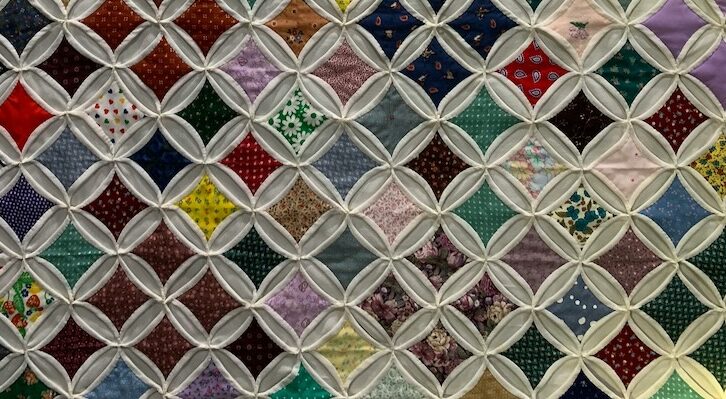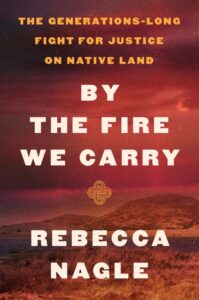
Rebecca Nagle on Craft Lessons from (a Different Kind of) Crafting
“I care more about being a good editor than being a good writer.”
This first appeared in Lit Hub’s Craft of Writing newsletter—sign up here.
Before I was a writer, I was a visual artist. In college, I majored in fibers. I knitted, I sewed, I dyed fabric, and I loved making things with my hands. But I was constantly switching mediums. By the time I graduated from school, I was working, mostly in video and new media art. My senior year, I remember sitting down with a mentor of mine, Annet Couwenberg, chair of the Fibers Department. I was showing her the interactive video project I was working on for my thesis and I joked it didn’t really fit with my major. Annet corrected me. She told me I was still a fibers artist, not because of the material I used, but because of the way I worked. I approached the video project the way a person would work on a quilt–in pieces stitched together to make the whole.
When I look back at the sketchbooks I kept over the decade I did visual art, they are not full of drawings. They are full of words. Whether it was a script I recited during a performance or text I projected onto a wall, writing kept showing up in my art. But I was afraid to put those words out into the world, naked, without anything to dress them up. With art, you can hide behind interpretation. In writing–if it’s good–you say exactly what you mean. For a long time, that level of honesty scared me.
As I found writing (or writing found me) that craft-based approach stayed. In my creative process, I don’t look like a pensive writer–staring off into space, trying to fill the blank page. I look like a maker processing material.
Like the basket maker collecting reed, I start by gathering all my research. As a non-fiction writer, this includes all the documents I want to read and a long list of the people I want to interview. For example, to research the Murphy case I collected every piece of paper that had been filed in its 20 year history, from the court transcripts of the 2000 trial, to the Supreme Court’s 2020 decision. I interviewed the defendants, his attorneys, police officers, family members, community members, witnesses, legal strategists, and tribal leaders.
After collecting my materials, I process them. I read the documents in big chunks and then wrote summaries of each primary source. Then, I collected those source materials into one, very, very long document that outlined the research I wanted to use for each chapter.
To start, I would write around the research, summarizing and pulling quotes. The rough first draft was a brain dump of too much information that no one would want to read. I am not precious about my words at this stage. I care more about being a good editor than being a good writer.
In my craft-based approach to writing, eventually the material I was processing became the book itself. Instead of focusing on one big edit where I get everything right, I edit over and over again–each time looking for different things. I would edit for cuts, edit for order, edit for big ideas. I would put the book down for a couple weeks, come back to it fresh, read it, and put all my thoughts up on a big wall. I dreamed about it, prayed about it, talked to myself about it. I read difficult sections out loud. I did line edits by hand.–about a dozen times for each chapter. I would make lists of what I needed to fix in the book, put the list on the wall, and cross each item off as I completed it. The first round of edits often ended with a complete rewrite. But big edits, including structural changes, were made until the very end.
My goal is to synthesize the mountain of research into a compelling narrative that is easy to read and understand. I want people who don’t have a foundation in history of the law to pick my book up and read it without difficulty. Fitting the research into that type of book without watering it down or oversimplifying complex truths is hard. The only way I know to do it is to start with a draft that is far from that goal and inch my way towards it with each edit. In other words, I trust the process.
_______________________________________________
By the Fire We Carry by Rebecca Nagle is available now via Harper.
Rebecca Nagle
Rebecca Nagle is an award-winning journalist and a citizen of Cherokee Nation. She is the writer and host of the podcast This Land. Her writing on Native representation, federal Indian law, and tribal sovereignty has been featured in the Atlantic, the Washington Post, the Guardian, USA Today, Indian Country Today, and other publications. She is a Peabody Award nominee and the recipient of the American Mosaic Journalism Prize, Women’s Media Center’s Exceptional Journalism Award, and numerous honors from the Native American Journalist Association. Nagle lives in Tahlequah, Oklahoma.




















